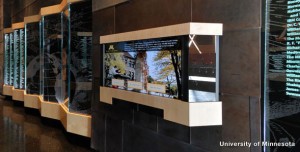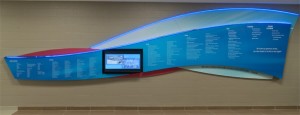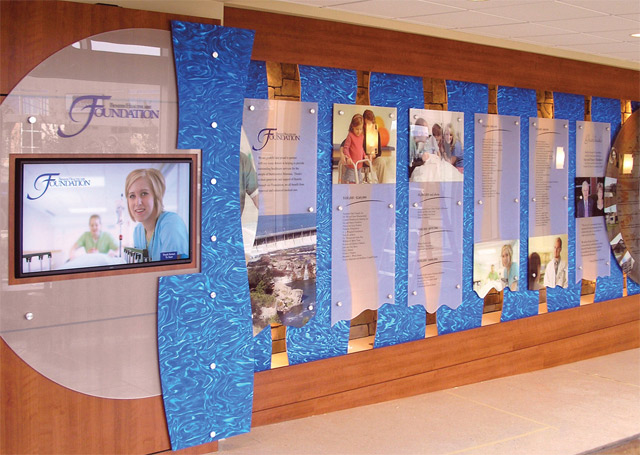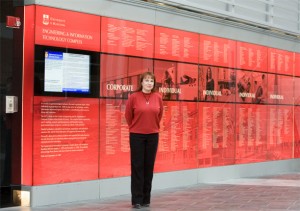
Multimedia recognition display at the University of Minnesota. The key to success is in the planning.
Electronic donor recognition is now used by leading non-profit organizations throughout the world and it is fast becoming an essential element of any donor recognition program.
The superior attraction capabilities of electronic donor recognition displays enable nonprofits to engage and recognize donors, contributors, volunteers and board members with video, audio, photographs and text, in a fashion that not only saves time, but also save space. And because the digital displays are quick and easy to update from any Web-connected computer, they are always current.
Donor names and profiles, major donor recognition, current and historical video, giving programs, fundraising events, volunteer opportunities and success stories are just a few of the options available with electronic recognition displays, which are really limited only by your imagination.
The key to building a beautiful and successful electronic recognition display is in the planning, not just to make sure you meet your budgetary and time-line objectives, but also to be certain that it remains a relevant and engaging destination at your organization for years to come.
Key questions to consider when planning your electronic donor recognition display include:
- Is your organization ready for electronic recognition?
- Location, Location, Location! Where will you set up your display for maximum exposure?
- Content Is King! What content do you have? What will you develop?
- Will your display be touch screen or self-cycling?
- Will your display be integrated or self-standing?
- Will you integrate your recognition display with your Web site?
- How will you select a vendor?
- How will you handle day-to-day content updates?
- How will you market your new display and your important messages?
Read More: 10 To-Do’s To Ensure Your Electronic Recognition Display Informs, Inspires, Impresses and Involves!










